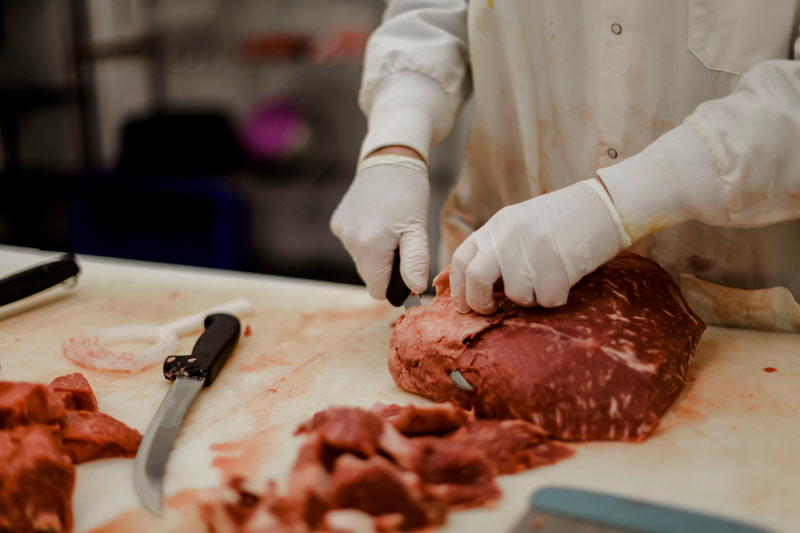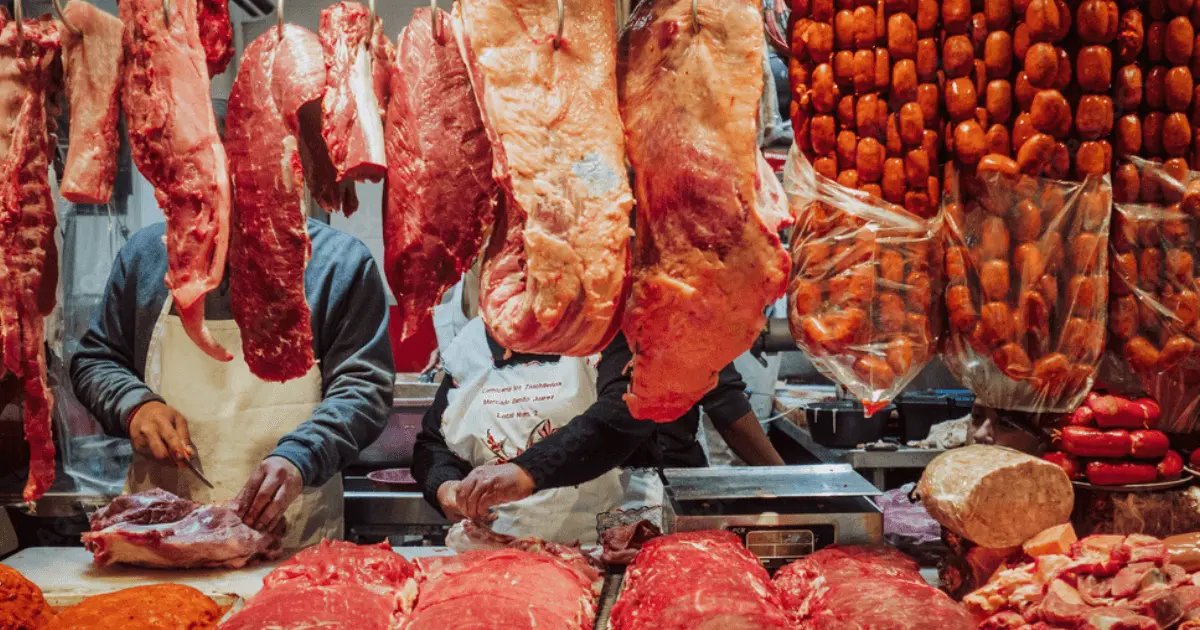Go To Bagley Farms Meat Market Edwardsville IL for Farm-Fresh Meat and Specialized Cuts
Go To Bagley Farms Meat Market Edwardsville IL for Farm-Fresh Meat and Specialized Cuts
Blog Article
Uncover the Art of the Butcher's Cut in a Modern Meat Market
In the ever-evolving landscape of contemporary meat markets, the butcher's cut has transcended its standard roots, combining old-time craftsmanship with contemporary methods. bagley farms meat market edwardsville il. Today's butchers are not just cpus of meat; they are knowledgeable artisans that stress sustainability and honest sourcing. Their proficiency in picking and preparing cuts customized to specific cooking demands uses an unrivaled dining experience. Yet, what genuinely sets the contemporary butcher apart is their capacity to forge a deeper link between consumers and the origins of their meat. How do these masters balance practice with innovation, and what implications does this have for the future of meat intake?
Development of Butchery Techniques

The mid-20th century saw butchery methods additionally improved by clinical insights into muscle biology and meat aging, boosting both tenderness and taste. Developments like vacuum cleaner product packaging and refrigeration expanded item shelf-life, permitting butchers to diversify offerings and boost quality assurance. This duration also noted the increase of specialized tools, such as band saws and meat slicers, which increased precision and effectiveness in meat processing.
The 21st century has actually introduced digital modern technology right into the butchery realm. Digital systems currently help in tracking animal provenance and maximizing cuts to meet certain customer choices. Additionally, a renewal in artisanal butchery has arised, blending conventional abilities with modern-day understanding to satisfy customers seeking moral and lasting meat alternatives. This advancement highlights a vibrant interaction in between tradition and innovation, meeting modern demands while maintaining the craft's heritage.

Comprehending Meat Cuts

Comprehending the intricacies of meat cuts is crucial for both butchers and customers looking for top quality and value. Each cut comes from a different part of the pet, giving special tastes, structures, and food preparation approaches. Mastery of these differences not just boosts culinary experiences but also makes best use of the energy of each carcass. For butchers, specific cuts show skill and regard for the craft, ensuring marginal waste and ideal return.
The primary groups of meat cuts include primitive, sub-primal, and retail cuts. Primitive cuts, such as the loin, rib, and chuck, are the large sections originally divided from the carcass. Butchers then break these down better right into sub-primal cuts, prior to ultimately producing retail cuts readily available to consumers, like ribeye or tenderloin. Each phase requires mindful attention to anatomical structure and muscular tissue composition.
Comprehending muscle mass make-up is critical; muscle mass made use of more frequently by the pet have a tendency to be harder and are best fit for slow food preparation techniques, while less-used muscular tissues, like those discovered in the loin, are extra tender and suitable for grilling or roasting. Knowledge with these differences equips consumers to make educated choices, improving their cooking ventures.
Picking Quality Meat
Selecting the ideal meat entails even more than just picking an aesthetically attractive item from the display screen. The art of selecting high quality meat needs a critical eye and expertise of certain attributes that represent freshness and excellence.
Secondly, consider the marbling, which describes the white flecks of fat within the muscular tissue. Appropriate marbling is a crucial sign of tenderness and flavor, as it thaws throughout food preparation, boosting the meat's juiciness. Remember, higher marbling often associates with superior high quality cuts, such as USDA Prime.
Appearance is Clicking Here one more important factor; meat needs to really feel firm to the touch, not slimed or excessively soft. In addition, be conscious of the aroma. Fresh meat ought to have a clean, neutral odor, free from any sour or repulsive smells.
Matching Cuts With Food Preparation Approaches
Successfully matching cuts of meat with the appropriate cooking approaches is crucial for attaining ideal taste and appearance. Different cuts vary in tenderness, marbling, and connective tissue material, each needing certain strategies to open their capacity. Tender cuts like filet mignon and ribeye, with their fundamental marbling, benefit from high-heat, quick-cooking techniques look at here such as cooking or pan-searing. These methods boost the meat's natural flavors and ensure a juicy coating.
Conversely, tougher cuts like brisket and chuck roast are abundant in collagen, which breaks down into jelly when prepared slowly. These cuts are suitable for braising or slow-moving roasting, enabling the meat to soften gradually and establish deep, complicated tastes. Cuts such as short ribs and pork shoulder get on well with slow-cooking techniques, where prolonged cooking times change their durable structures into succulent dishes.
Lamb shanks and oxtail, which require long term food preparation to soften, are best prospects for cooking or slow simmering. These approaches coax out rich, passionate flavors while keeping moisture. By recognizing the distinct features of each cut, cooks and home cooks alike can boost their cooking productions, guaranteeing each dish is both satisfying and remarkable.
The Butcher's Duty Today
Navigating blog the developing landscape of the modern-day meat market, the butcher's role today prolongs beyond simple preparation of cuts. Contemporary butchers are culinary craftsmens, instructors, and supporters for sustainable techniques.
Along with crafting specific cuts, butchers currently engage straight with clients, offering cooking recommendations and customizing selections to match specific demands and preferences. Their expertise in meat aging, marbling, and taste profiles encourages customers to make educated decisions, enhancing their culinary experiences. This tailored solution exhibits the butcher's progressing duty as a relied on consultant in the kitchen.
In addition, butchers are essential in minimizing waste, making use of whole animals to produce diverse products such as sausages and stocks - bagley farms meat market edwardsville il. This extensive strategy not only respects the pet yet additionally lines up with contemporary sustainability goals. This way, the modern-day butcher embodies both tradition and development, adapting to an ever-changing market while preserving the artistry and honesty of their craft

Verdict
Proficiency in understanding diverse meat cuts and top quality indications equips butchers to offer educated recommendations, lining up specific cuts with optimum cooking methods. By honoring historical practices while welcoming modern needs, the butcher's function remains vital in today's sophisticated meat market.
Report this page